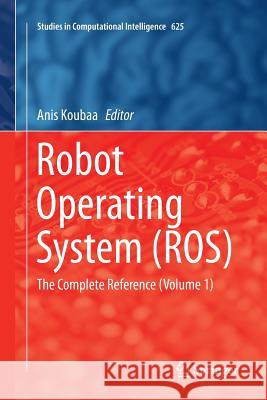Robot Operating System (Ros): The Complete Reference (Volume 1) » książka
topmenu
Robot Operating System (Ros): The Complete Reference (Volume 1)
ISBN-13: 9783319798844 / Angielski / Miękka / 2018 / 728 str.
Kategorie:
Kategorie BISAC:
Wydawca:
Springer
Seria wydawnicza:
Język:
Angielski
ISBN-13:
9783319798844
Rok wydania:
2018
Wydanie:
Softcover Repri
Ilość stron:
728
Waga:
1.02 kg
Wymiary:
23.39 x 15.6 x 3.76
Oprawa:
Miękka
Wolumenów:
01
Dodatkowe informacje:
Wydanie ilustrowane











